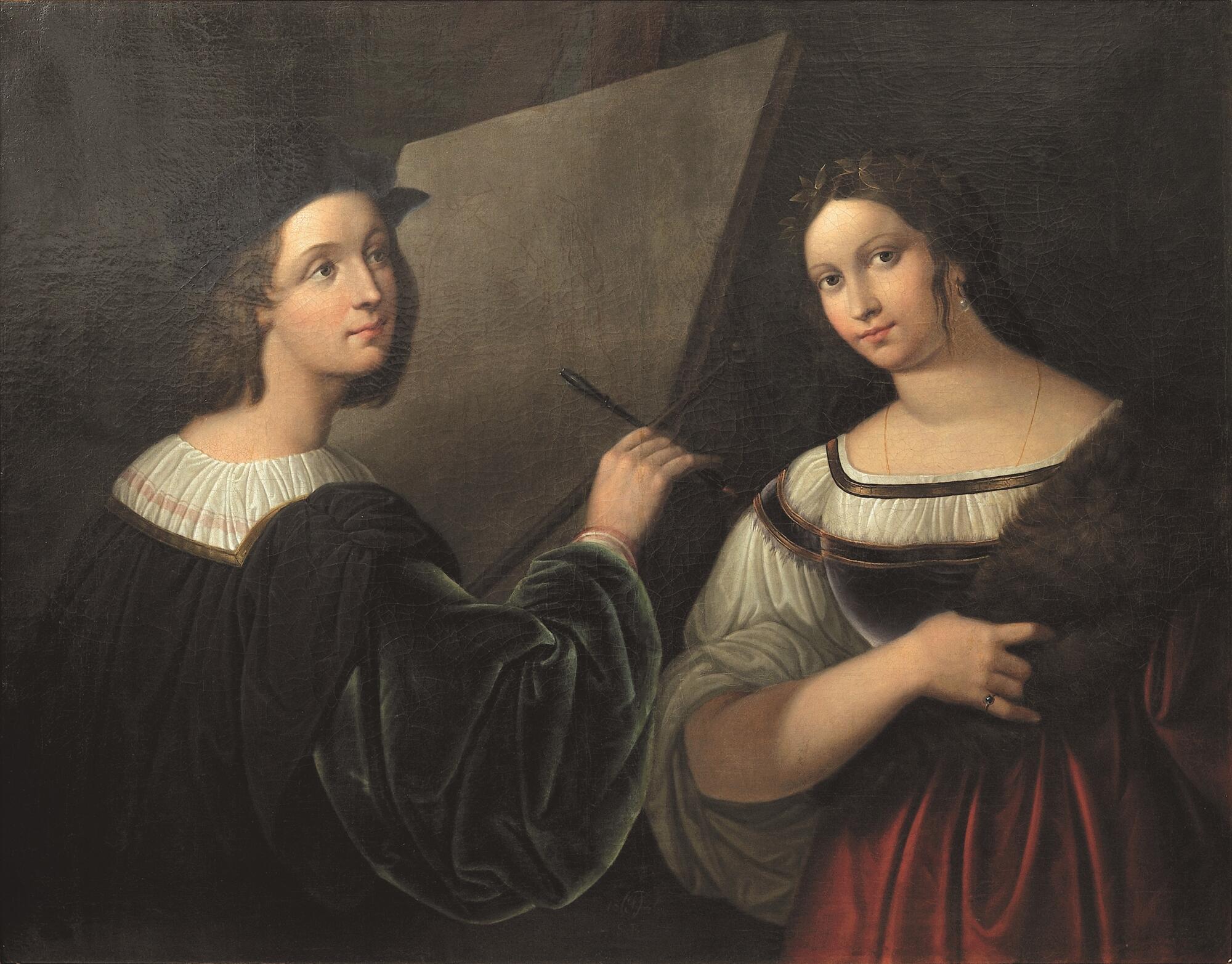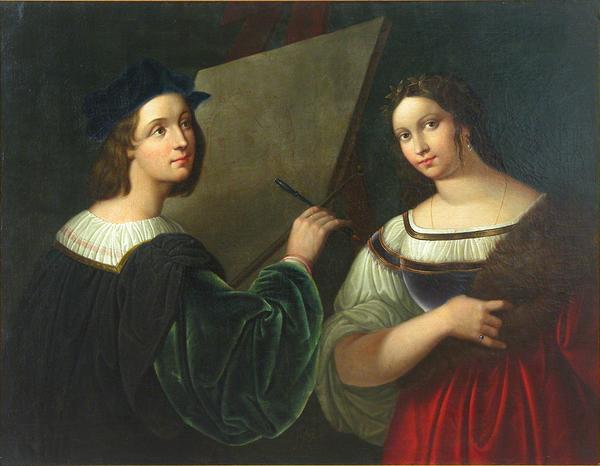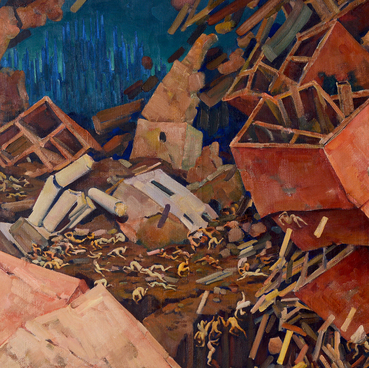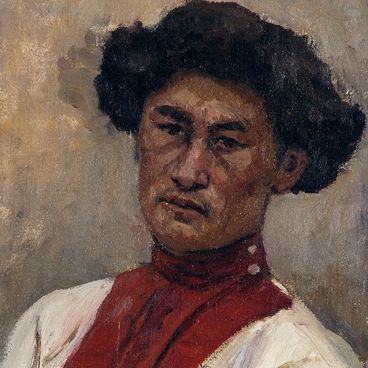ScheffEr von LeonhardshOff lived too little to become famous—the artist died in 1822 before his 27th birthday. However, his life was full of events. At the age of fourteen, the future artist participated in the liberation war against Napoleon and reached the rank of lieutenant. He then studied at the Academy of Fine Arts in Vienna, where he joined the circle of romantic artists who had a rather strong influence on his work.
These German and Austrian artists called themselves Nazarenes and tried to bring back the painting manner of the medieval and early Renaissance masters. Under their influence Scheffer von Leonhardshoff also became interested in Italian art. He visited Venice, Florence, Pisa, lived in Rome, studied paintings by Raphael, Perugino, Michelangelo and worked a lot.
‘RaphaEl and FornarIna’ is one of the few surviving works of the artist. For him, RaffaEllo SAnzio was kind of a guiding star, an ideal and a model. In the artwork, von Leonhardshoff emphasizes the transforming power of art. The Italian painter at work becomes the embodiment of this idea.
Another important thematic emphasis in the painting is the relationship between the artist and his muse. Modeling Fornarina is a semi-legendary beloved of the artist. There is still no reliable evidence to prove that she has ever existed. In the 18th and 19th centuries, there were several legends about Raphael and Fornarina. Moreover, they often contradicted each other. In some of them, Fornarina is a courtesan who was in favor of the genius artist and eventually became the cause of his early death. Others tell the story of a pure and sublime love of two hearts.
Scheffer von Leonhardshoff was inspired by this very part of a romantic story, based on one of the most popular legends. It is believed that Raphael saw a girl in the window brushing her hair. She was a baker’s daughter, so everyone called her fornarina — the little baker girl. Bedazzled by her beauty, Raphael fell in love and Fornarina became his constant model.
These German and Austrian artists called themselves Nazarenes and tried to bring back the painting manner of the medieval and early Renaissance masters. Under their influence Scheffer von Leonhardshoff also became interested in Italian art. He visited Venice, Florence, Pisa, lived in Rome, studied paintings by Raphael, Perugino, Michelangelo and worked a lot.
‘RaphaEl and FornarIna’ is one of the few surviving works of the artist. For him, RaffaEllo SAnzio was kind of a guiding star, an ideal and a model. In the artwork, von Leonhardshoff emphasizes the transforming power of art. The Italian painter at work becomes the embodiment of this idea.
Another important thematic emphasis in the painting is the relationship between the artist and his muse. Modeling Fornarina is a semi-legendary beloved of the artist. There is still no reliable evidence to prove that she has ever existed. In the 18th and 19th centuries, there were several legends about Raphael and Fornarina. Moreover, they often contradicted each other. In some of them, Fornarina is a courtesan who was in favor of the genius artist and eventually became the cause of his early death. Others tell the story of a pure and sublime love of two hearts.
Scheffer von Leonhardshoff was inspired by this very part of a romantic story, based on one of the most popular legends. It is believed that Raphael saw a girl in the window brushing her hair. She was a baker’s daughter, so everyone called her fornarina — the little baker girl. Bedazzled by her beauty, Raphael fell in love and Fornarina became his constant model.



